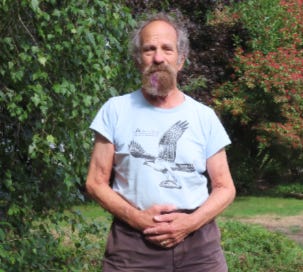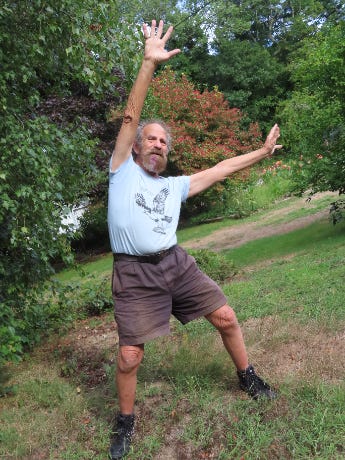(Editor’s note: I have been a fan of Tai Chi for more than 50 years. I learned about this extraordinary Chinese system as an undergrad at the University of Illinois in Champaign-Urbana when I saw a dance group perform Tai Chi. I tuned in on it as featured on the “King Fu” TV series. Shaolin Kung Fu, a martial art, is the “hard” form of Tai Chi. I studied Tai Chi as a form of exercise at the University of Michigan in the late 1970s. My wife and I studied with one of the few Chicago area masters of Qigong—meditative short-form warm-ups to Tai Chi that can stand on their own—in the early 1990s while we were home writing a book.
(Tai Chi and Qigong have always been there for me. But life sometimes gets in the way. But I always go back to them. Active Surveillor Allan Greenberg recently told me about his Tai Chi practice after I wrote a column here that touched on the topic. Allan is a dedicated practitioner. He’s motivated me to return to Qigong as an exercise and stress reducer. Maybe Allan can motivate you, too?)
By Allan Greenberg
I have been involved in Tai Chi for almost 30 years. While I certainly will not claim that Tai Chi is a way to triumph over prostate cancer (PCa), I argue strongly that it helps to improve and maintain whole body health, physical and—for many—mental/psychological health.
And for many of us, perhaps most of all Tai Chi helps us be in the moment.
My first realization of the effects of Tai Chi occurred when I went on an Appalachian Mountain Club training hike and found that my agility, balance, and flexibility were significantly improved, and this after relatively little time doing Tai Chi. Especially for those of us who are older, flexibility and agility are of vital importance, help in avoiding falls in all circumstances, and if not avoiding being better able to land more safely.
I recommend the following You Tube segments as a general introduction to Qigong, the meditation and flexibility components of Tai Chi. (If you are interested in proceeding to Tai Chi forms, let me know and I will provide additional resources
[greenbergallan04@yahoo.com].)
You Tube: Shaolin Qigong 15 Minute Daily Routine
Shaolin Qigong 20-Minute Daily Routine (some different components from the 15-minute version)
There are several other YouTube videos by the same monk, with different foci and many different movements.
NOTE: while I am recommending these two Youtube presentations, they are certainly not the only ones, and are a variation on the general theme. When I learned and was involved with an instructor, these were not the routines that we did as part of our exercise and warm-up before doing the forms we were learning and which you may have seen when there are videos of people doing Tai Chi in various public settings.
Allan Greenberg demonstrates.
1.
2.
3.
4.
5.
6.
The pictures are poses from some of the exercises.
#1. A standard starting meditative pose, hands just in front of the belly button (jargon: center dantan), intended as centering and being in the moment.
#2 and #6, excellent for the lower back: hands are held apart, as are legs—one keeps the legs straight, spread as far as one wants, and arms are extended fully: hands are rotated 3-6 times in one direction, and 3-6 in the other—aiming to be able to circle and have fingers touch the ground.
#3 and #4, part of one exercise: one arm is raised, then brought down to just above the belly button and the other is brought up to about 8” within, the hands are rotated once in each direction, and then one arm is raised and stretched up with palm up, with the other extended downwards with palm down, and pose is held for about a slow count of eight, then upward stretching arm is brought down with hand cupped around back of neck, other arm raised with the back of palm pressed against lower back, rotating body in one direction and turning as far as may be done without straining, and then rotating in the other direction, each three times; then the other arm is raised, following the same process as before except with arms change; the total is down 3 or 6 times in either direction.
#5: for flexibility and balance: first one leg is raised, bent at the knee, with the other leg slightly bent so that you are able to balance, rotating foot and both hands, for a count of 6-12; then the same is done with the other leg raised.







